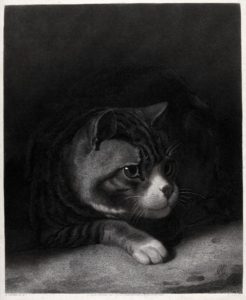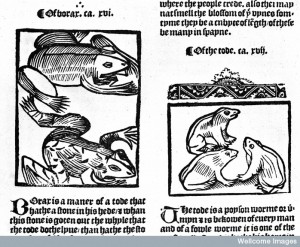
James Woodforde was a rather ordinary man living in the eighteenth century. He was a Church of England clergyman working as a curate in Somerset before he was offered his own living in Norfolk in 1774.1 He has, however, been assured a place in history because he wrote a diary in which he recorded his daily thoughts for 43 years.

Like many other diarists Woodforde sometimes recorded his bodily ailments and illness. In his case this includes a rather curious description of his attempts to treat a sty on his eyelid. Early modern people suffered from a range of problems with their eyes including cataracts, redness, swellings and temporary vision loss. I have yet to come across another person who opted for a method of treatment that seems so apt for #InternationalCatDay though.
In a March 1791 entry he explained,
‘The Stiony on my right Eye-lid still swelled and inflamed very much. As it is commonly said that the Eye-lid being rubbed by the tail of a black Cat would do it much good if not entirely cure it, and having a black Cat, a little before dinner I made a trial of it, and very soon after dinner I found my Eye-lid much abated of the swelling and almost free from Pain. I cannot therefore but conclude it to be of the greatest service to a Stiony on the Eye-lid.

Woodforde clearly gave this cure some thought. He pontificated about the type of cat used and whether that had changed the outcome. He said ‘Any other Cats Tail may have the above effect in all probability- but I did my Eye-lid with my own black Tom Cat’s Tail’. Unfortunately for Woodforde his wonder cure did not last and he wrote in his diary just four days later that his eyelid was again inflamed. He tried several more remedies but found them troublesome and removed them and washed his eyes with cold water instead, upon which his eye ‘appeared much better for it’.2
_________________________________________
1. http://www.oxforddnb.com, s.v. ‘James Woodforde’.
2. John Beresford (ed.), James Woodforde: the diary of a country parson 1758-1802 with an introduction by Ronald Blythe, (Canterbury Press: Norwich, 1999)



The ending was a relief. From what I know of early medicine, I feared this would end badly for the cat.
cat saliva is antibacterial, possibly the cat had been washing its tail and it brought some temporary relief. A drop of honey on it would have done better.
That is a very good point. Would the saliva have been offset by the cat hair though? 🙂
Jennifer, thank you ever so for you post.Much thanks again.